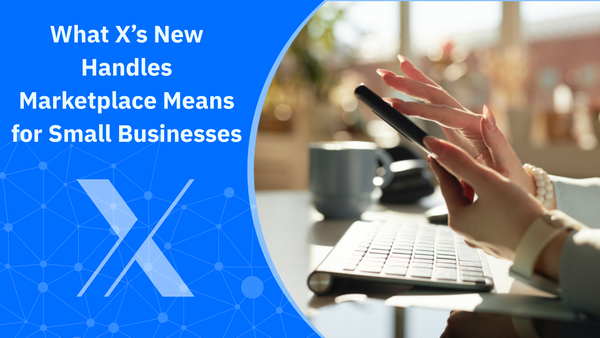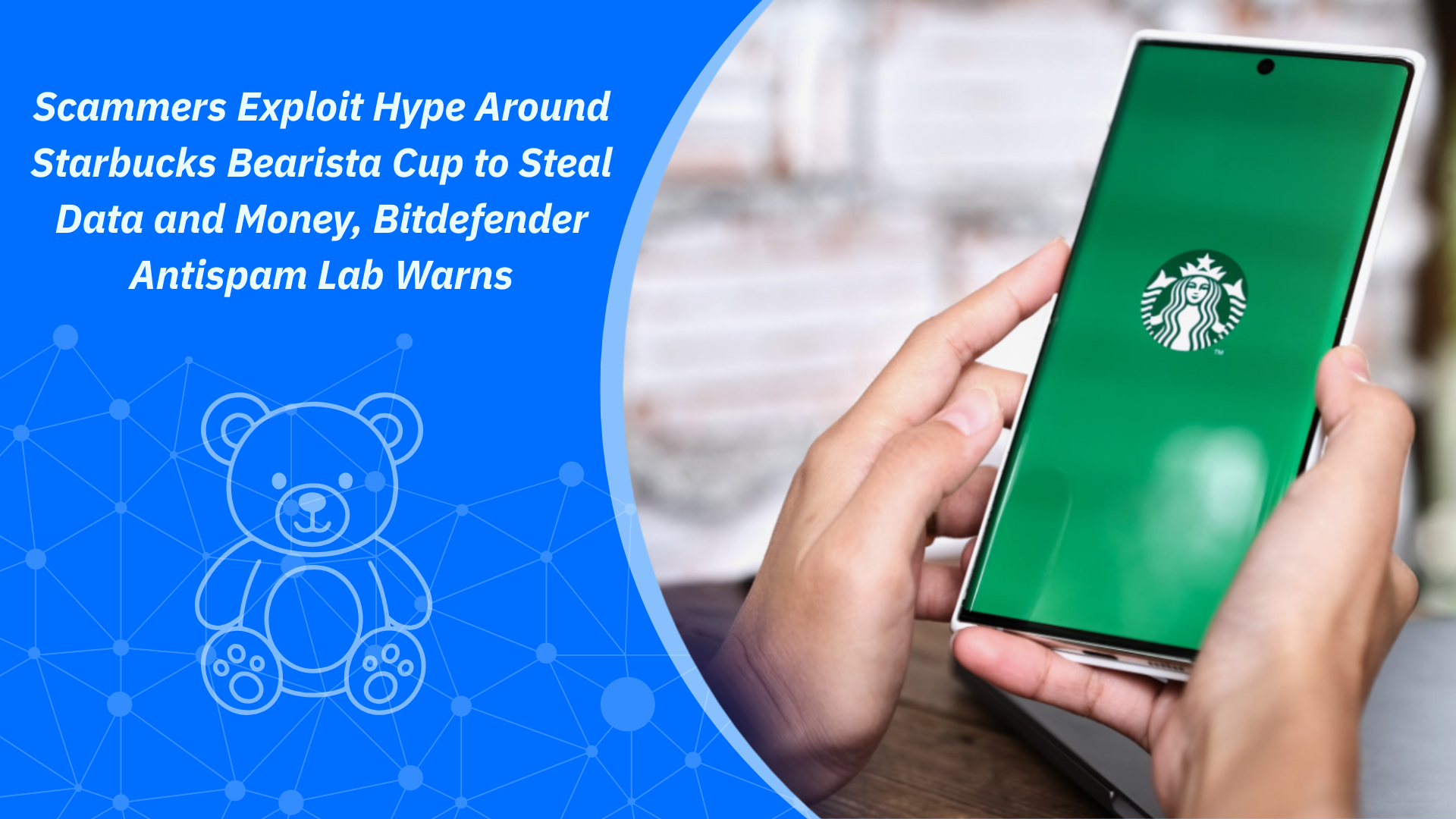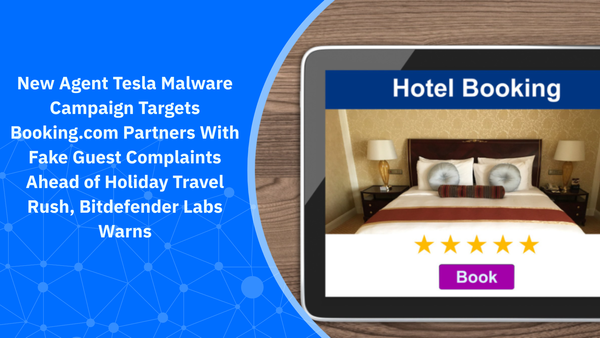What X’s New Handles Marketplace Means for Small Businesses

Long-abandoned @handles on X (formerly Twitter) are becoming valuable digital real estate, with some “rare” usernames reportedly selling for as much as seven figures each.
Through its new Handles Marketplace, available exclusively to Premium and Premium+ subscribers, X now lets users purchase inactive usernames, reviving long-dormant accounts for a price.
For small businesses, this isn’t just about branding; it’s about owning a piece of online identity. Securing that perfect @handle might boost visibility and credibility — but it also comes with a new set of cybersecurity and digital ownership risks that every business should understand before jumping in.
How X’s Handle Marketplace Works
The new system lets paying users claim inactive usernames from a pool divided into two tiers:
- Priority Handles: available to Premium subscribers by request.
- Rare Handles: premium usernames sold for thousands or even millions of dollars.
According to TechCrunch, X’s marketplace categorizes usernames into two groups:
“Examples of ‘Priority’ handles include usernames like @GabrielJones, @PizzaEater and @ParadoxAI.”
“‘Rare’ handles include usernames like @Pizza, @Tom, and @One.”
“Rare handles could be priced at anywhere from US $2,500 to over seven figures.”
When you claim a handle, your old one is frozen, and if you downgrade your subscription, the premium handle may revert to its previous state.
That means your handle — your brand’s public identity — now depends on an ongoing paid relationship with the platform.
What the Fine Print Says — and Why It Matters
“You do not own your handle.”
“You do not own it and this transfer does not grant you any right, title, or interest.”
— X Handle Transfer Agreement
Translation: That shiny @YourBrand handle isn’t truly yours — it’s leased. Lose your subscription, and you could lose your name. For a small business, this introduces a dependency risk that few realize exists.
X says you also “must log in at least once every 30 days, or X may reclaim your handle.”
This means you can’t risk being inactive on the platform. A month of social media silence could cost your business its handle, opening the door to impersonation or phishing.
Branding Meets Cybersecurity: The Risks Behind the Marketplace
1. Impersonation and Phishing
When a business changes its handle, scammers move fast. Fraudsters may recreate the old handle or use look-alikes to steal credentials or money, or damage customer trust.
Example: A bakery moving from @OldHandle to @NewHandle could see @Old_Handle pop up, pretending to announce the change and sending phishing links.
Tip: Publicly announce handle changes, verify your new profile, and update your links everywhere — from your website and email signatures to digital ads and QR codes.
2. Continuity and Credential Management
Businesses must maintain subscriptions, activity, and access control. A missed renewal, employee departure, or payment failure could cause your handle to revert, breaking links and confusing customers.
“X’s total liability shall not exceed US$100 or the amount you paid,” X explains.
Meaning that if you lose access or the handle disappears, compensation is minimal. Continuity depends on your own security and practices, not the platform’s.
3. Social Engineering and Staff Targeting
The excitement around the Handle Marketplace creates fertile ground for scams. Attackers can pose as “X support” or “handle brokers,” sending phishing emails that offer “early access” or “exclusive names.”
X also emphasized that users need to immediately notify the platform of any “actual or suspected misuse”.
Tip: You should verify all communications from X, and train employees to identify red flags.
4. Handle Resale and Internal Security Risks
According to X’s new Handle Transfer Agreement, users “may not transfer the handle to a third party or engage in resale.”
Even internal transfers, such as those between sister companies, are restricted. Businesses need clear credential ownership — and a plan if a social media manager leaves.
How Small Businesses Can Stay Secure
- Enable Multi-Factor Authentication (MFA) on all social accounts.
- Use unique, strong passwords stored in a password manager.
- Limit admin access — give control only to trusted team members.
- Monitor for impersonation and report fraudulent handles immediately.
- Schedule regular logins to keep your handle active and compliant.
- Budget for continuity — treat subscription fees as brand protection, not optional extras.
- Have a backup plan — register alternate handles or domains that redirect users if your primary handle becomes unavailable.
Why Security Should Scale with Your Business
The Handle Marketplace signals a larger shift: social identities are becoming business assets, complete with contracts, payments, and risks.
But even the best handle can’t help your business if your account is hijacked or your devices are infected. Before investing in a premium handle, invest in the protection that keeps your brand safe.
Bitdefender Ultimate Small Business Security can help your small business secure not just data — but your digital identity as well, with:
- Easy-to-use security dashboard — no IT team required.
- Best-in-class protection for your business and clients’ data.
- Scam & fraud prevention across all accounts.
- Unlimited VPN traffic for safe remote work and browsing.
- Account breach protection for all team members.
Plus much more...
tags
Author
Alina is a history buff passionate about cybersecurity and anything sci-fi, advocating Bitdefender technologies and solutions. She spends most of her time between her two feline friends and traveling.
View all postsRight now Top posts
Cybercriminals Use Fake Leonardo DiCaprio Film Torrent to Spread Agent Tesla Malware
December 11, 2025
Genshin Impact Scam Alert: The Most Common Tricks Used Against Players
December 05, 2025
How Kids Get Automatically Added Into WhatsApp Groups with Horrific Imagery Without Consent
November 24, 2025
Scammers Exploit Hype Around Starbucks Bearista Cup to Steal Data and Money, Bitdefender Antispam Lab Warns
November 18, 2025
FOLLOW US ON SOCIAL MEDIA
You might also like
Bookmarks








